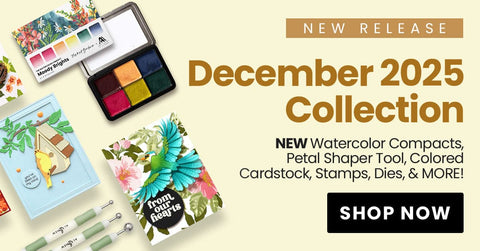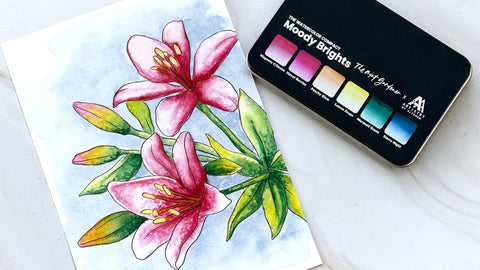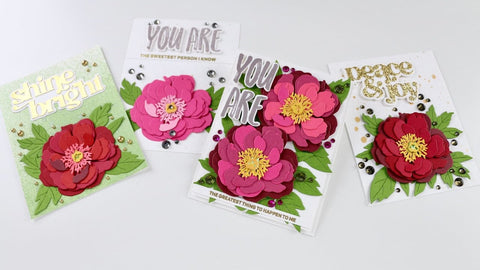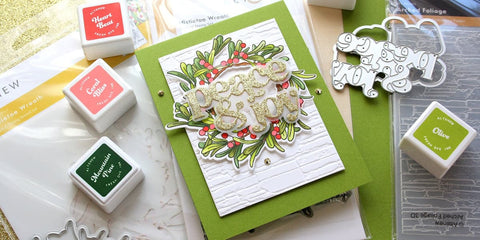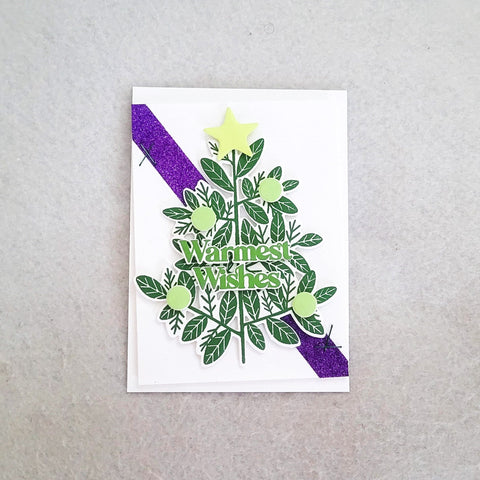How to Start Watercoloring for Beginners
Last Updated: September 28, 2021
Have you ever seen a beautiful watercolor painting and wondered if you could ever paint like that? Starting a hobby in watercolor painting is not as complicated or difficult as others seem to think. With the right water coloring set and supplies, the basics of watercoloring, and some inspiration, you can create your own watercolor art in no time!

Before you jump right in, let’s discuss some of the common obstacles most beginners face as they start their watercoloring journey.
Fear of failure: You will make mistakes, that's for sure. The important thing is to accept it as part of the learning process. Whenever you start doubting yourself, thinking, "What if I make mistakes?" or "What if I fail?", always remember that even the best watercolor artists out there started out like you - unsure, afraid, and intimidated. Nobody started creating masterpieces right away. So, yes, you will fail, but you should not give up.
Lack of inspiration: There is an artist inside of you. What you need to do is find inspiration. Feelings, sceneries, food, music, and even your boring daily routine can be a source of inspiration. Basically, you can express just about anything in your painting. When you start practicing, there are a ton of easy watercoloring ideas that can be found online, especially on YouTube, Instagram, and Pinterest. Never stop looking for inspiration.
Lack of time: Unlike other artistic hobbies, watercolor painting is not very high-maintenance. You can do it anytime and anywhere. You can do it whenever inspiration strikes. Stop saying “I just don’t have time for this!”. It would only take 20 to 30 minutes a day to practice your watercoloring skill.
Budget: Just like any other hobby, spending way too much money on supplies right away is a no-no. You don’t have to go crazy on buying a water coloring set and other supplies. Start with the basic supplies such as watercolor paper, a watercolor palette, a beginner-friendly watercolor set, and of course a good quality watercolor brush. Getting cheap ones isn’t advisable, especially if you really want to level up your watercoloring skill. Make sure you invest in high-quality, but affordable, watercoloring supplies like these ones from Altenew.

Here are some important reminders before buying your first watercolor brush markers set:
Each watercolor brush marker’s barrel is filled with water-based color and coordinates with Altenew’s line of dye inks. The flexible, yet sturdy bristles on the brush tip will allow you to form both broad and fine strokes. Color can be applied straight from the marker, or diluted with water for a softer look. Each color in each set is carefully handpicked to coordinate with each other and cater to your coloring needs. If you’re on a tight budget, you can opt to buy the individual sets in this bundle.

Here are a few simple steps on how to use watercolor brush markers for beginners:





Before you jump right in, let’s discuss some of the common obstacles most beginners face as they start their watercoloring journey.
Fear of failure: You will make mistakes, that's for sure. The important thing is to accept it as part of the learning process. Whenever you start doubting yourself, thinking, "What if I make mistakes?" or "What if I fail?", always remember that even the best watercolor artists out there started out like you - unsure, afraid, and intimidated. Nobody started creating masterpieces right away. So, yes, you will fail, but you should not give up.
Lack of inspiration: There is an artist inside of you. What you need to do is find inspiration. Feelings, sceneries, food, music, and even your boring daily routine can be a source of inspiration. Basically, you can express just about anything in your painting. When you start practicing, there are a ton of easy watercoloring ideas that can be found online, especially on YouTube, Instagram, and Pinterest. Never stop looking for inspiration.
Lack of time: Unlike other artistic hobbies, watercolor painting is not very high-maintenance. You can do it anytime and anywhere. You can do it whenever inspiration strikes. Stop saying “I just don’t have time for this!”. It would only take 20 to 30 minutes a day to practice your watercoloring skill.
Budget: Just like any other hobby, spending way too much money on supplies right away is a no-no. You don’t have to go crazy on buying a water coloring set and other supplies. Start with the basic supplies such as watercolor paper, a watercolor palette, a beginner-friendly watercolor set, and of course a good quality watercolor brush. Getting cheap ones isn’t advisable, especially if you really want to level up your watercoloring skill. Make sure you invest in high-quality, but affordable, watercoloring supplies like these ones from Altenew.

What are the best watercolor brush markers for beginners?
Most watercoloring beginners are unfamiliar with and don’t know how to use watercolor brush markers. These nifty watercoloring tools provide many of the features of your standard watercolor paints and watercolor pan sets but in a more convenient and mess-free way.Here are some important reminders before buying your first watercolor brush markers set:
- Choose quality over quantity.
- Pick a set with vibrant, blendable colors, and good color saturation.
- Find something that coordinates well with your dye inks or other coloring media that you have.
- Go for flexible yet sturdy bristles to allow you to form both broad and fine strokes.
- Easy to grip and use, especially for beginners.
- Look for a water coloring set that is easily refillable.
Each watercolor brush marker’s barrel is filled with water-based color and coordinates with Altenew’s line of dye inks. The flexible, yet sturdy bristles on the brush tip will allow you to form both broad and fine strokes. Color can be applied straight from the marker, or diluted with water for a softer look. Each color in each set is carefully handpicked to coordinate with each other and cater to your coloring needs. If you’re on a tight budget, you can opt to buy the individual sets in this bundle.
- Watercolor Brush Markers - Tropical Fiesta
- Watercolor Brush Markers - Winter Wonderland
- Watercolor Brush Markers - Spring Garden
- Watercolor Brush Markers - Autumn Festival Set

Here are a few simple steps on how to use watercolor brush markers for beginners:
- Choose a large, outline image that you can practice on. It can be a flower, a leaf, a geometric pattern, a mountain, etc. Whatever floats your boat.
- Stamp your image using oil-based and waterproof pigment ink, like this one from Altenew. This will ensure that the watercolor paint won’t bleed outside of the stamped image. You can also opt for messy or freehand watercoloring. This means you won’t need a stamped image - you can create an image using watercolor paints.
- IMPORTANT! Let the stamped image dry before you start watercoloring! This may take a while, around 5 minutes, or depending on how much ink you’ve used. If you don’t let it dry, it might smudge and bleed.
- If you’re using Altenew’s watercolor brush markers for the first time, you need to “unlock” it first by twisting the barrel to the right and removing the yellow-green ring. Afterward, tighten up the barrel by twisting it to the left.
- For new watercolor brush markers, you need to squeeze the barrel with a bit more pressure to let the watercolor pigment flow out through the brush and onto your paper or palette. After using it a few times, gently squeezing the barrel will do the trick - there is no need to squeeze it too hard.
- A little goes a long way! The watercolor pigment inside the watercolor brush markers is highly concentrated. You don’t want to use too much, especially if you’re only practicing. It is advisable to use a watercolor palette in order to control the color saturation.
- You can always apply the color straight from the marker, or dilute it with water for a softer look.
Looking for a few easy watercoloring ideas that are beginner-friendly?
As you learn how to start watercoloring, it’s important to find something that will spark your creativity. It will help you get motivated and organize your thoughts before you start watercoloring. Here are some watercolor painting ideas that beginners like you could try as you explore how this medium works. There are things that could be seen around you and things that can be conjured from your imagination.

- Flowers! You can never go wrong with flowers! It could be a bouquet of flowers, a single flower, or a full garden. You can easily practice shading, wet-in-wet, dry brushing, no-line watercoloring, and other watercoloring techniques for beginners using flowers.
- A tree. Even if you live in the city, you can find one or two trees around you. It doesn’t need to be a majestic and fabulous looking tree. Trees are fun to paint because of the varying sizes, height, colors, and textures.
- Things around your house such as a coffee mug, a book, a flower vase, a pillow, etc.
- Your favorite food! It’s always easy to create watercolor art with food. In fact, you will find a variety of watercolor food paintings and illustrations online.
- A scenery you always look forward to such as sunset, sunrise, or the night sky.

- A landmark in your city or country.
- An image inspired by your favorite music or book.
- An abstract painting of something you love.
- Create beautiful scenery using different colors and shapes.
- Basically anything and everything in nature - mountains, oceans, forests, plants, etc.
Watercoloring Techniques for Beginners
Knowing some basic watercoloring techniques is crucial for beginners like you. You can either practice a few techniques or master one technique. It’s all up to you. The most important thing here is to keep on practicing and try experimenting. Here are a few watercoloring techniques that you can try:
-
Wet-on-Wet Watercoloring Technique: Just as the name suggests, this is done by adding one color to another color while the first color is still wet, therefore giving your artwork a flowy look. This is suitable for painting landscapes, sunsets, and skylines. In this technique, you have no control over the paint and how it reacts with other colors. This will give your painting interesting textures and color combinations.
-
Wet-on-Dry Watercolor Technique: This technique is used when the artist wants to achieve precise, crisp, and defined shapes, as opposed to a more flowy and messy look. It produces clean, sharp edges since the dry paint will remain in place, unlike in the wet-on-wet technique. Once the paint is completely dry, there will be a noticeable fading or slight change in the color saturation. This will allow you to add more colors and play around with color combos.
- Layering or Glazing Watercoloring Technique: Similar to the wet-on-dry technique, this is done by applying multiple layers of paint AFTER each layer has dried. The most vital step is to let each layer of paint dry before applying the next one. This technique gives your image depth and richness of color.



